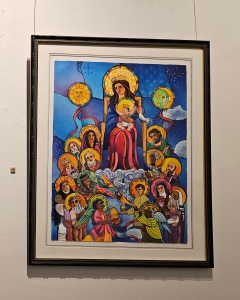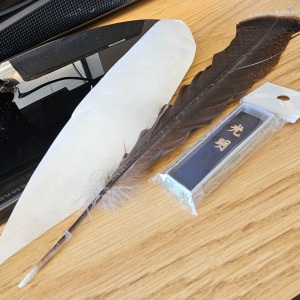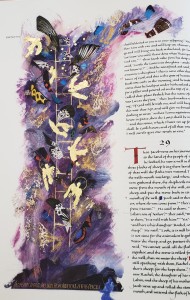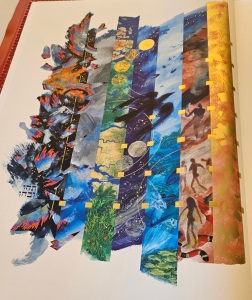As I mentioned in the June Inspire last week, I’ve been awed by the number of inspiring events I’ve been privileged to have participated in since the very beginning of the month. Since I was unable to choose one or two to write about, I thought I’d write about most of them, and include some photos and links so you can explore on your own in your own timeframe and let them capture your imagination and inspire you as well.
One warning before I really get into it: this will be picture heavy (as well as, from my estimate, word heavy).
June began with a weekend retreat that I’m still feeling. June is also the end of the school year, and so during finals and Regent’s exams, my youngest often doesn’t have to go to school, and since the whole crew at home took a day off to see The Flash movie (no spoilers ahead), we decided to take a road trip to Connecticut. And then finally, a field trip to a college outside of Albany to tour a set of books (a Bible actually) of Biblical calligraphy and illuminations. And in between all of that it’s been busy with driving my kids, funeral for a colleague and friend, interfaith doings, Red Hats lunch, a broken hearing aid, weekly rosary, and Father’s Day, an interfaith prayer service, and a fellowship luncheon.
June has been a lot more than usual, and it’s still got a few days left; Indiana Jones will be inspiring in its own way. I don’t want it to sound as though I’m complaining; I’m really not, although once I get started it’s hard to turn off the listing; it’s like a waterfall. However, I can’t say it’s been dull or uninspiring; it’s definitely been the opposite of both of those.
During the retreat, I spent my time immersed within the First Nations Version: An Indigenous Translation of the New Testament. This was guided by Terry and Darlene Wildman, two people that I hope you’ll take the time to visit online. The entire retreat was surprising in so many ways. For one thing, I didn’t know that Terry and Darlene were musicians. In fact, that’s their primary calling, so the retreat was filled with Christian music with Native American tones. I initially thought “undertones” but that wasn’t the case; it was like a thread running through a tapestry. Their music was an integral part of our weekend. The prayer was steeped in Native American culture and ceremony with smudging  and praying in the seven directions with the four sacred plants [sage, cedar, sweetgrass, and tobacco]. In fact, when the retreat was over, I took a side trip to the St. Kateri Shrine (which was on the way to my Sunday night destination) and I just sat in the nature for a bit until before leaving I prayed the seven directions at the St. Kateri statue
and praying in the seven directions with the four sacred plants [sage, cedar, sweetgrass, and tobacco]. In fact, when the retreat was over, I took a side trip to the St. Kateri Shrine (which was on the way to my Sunday night destination) and I just sat in the nature for a bit until before leaving I prayed the seven directions at the St. Kateri statue 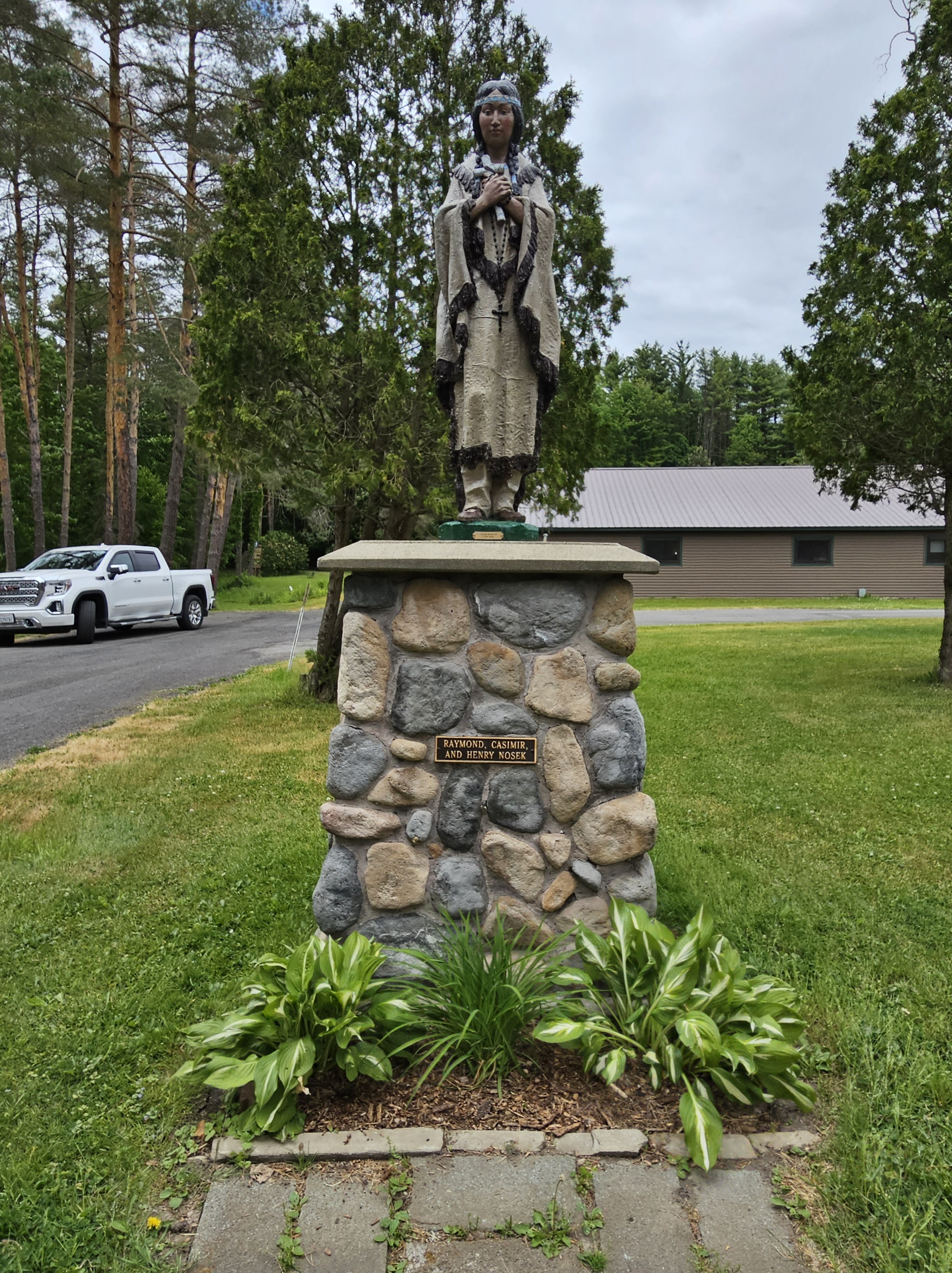 as well as jotting off a poem/prayer. I felt an intensity awakened throughout the whole weekend. Since then, I’ve committed to reading the FNV New Testament for my daily readings through June, which I have done. Because I’m not going back to the traditional Catholic version (in June), it is like reading the Scripture for the first time. Instead of translating what I’m used to, I’m reading intentionally the First Nations translation and interpreting the Scripture through the words chosen by the translator (primarily Terry Wildman and the Council that oversaw the project).
as well as jotting off a poem/prayer. I felt an intensity awakened throughout the whole weekend. Since then, I’ve committed to reading the FNV New Testament for my daily readings through June, which I have done. Because I’m not going back to the traditional Catholic version (in June), it is like reading the Scripture for the first time. Instead of translating what I’m used to, I’m reading intentionally the First Nations translation and interpreting the Scripture through the words chosen by the translator (primarily Terry Wildman and the Council that oversaw the project).
My friend, Brother Mickey McGrath, who I’ve written about before, has an art exhibit in West Hartford, Connecticut. When I looked up the logistics of going, I discovered that the property, a four-building campus and retreat center, had a labyrinth with the most unique center sculpture, and so the idea of a road trip was born. If we got up early enough, we could drive out, stay for a couple of hours, drive back, and still have time for our original plan of seeing The Flash movie on opening day.
Off we went!
The gallery was beautiful with sculptures and plants as well as several comfortable seating arrangements to easily sit in quiet contemplation of the art. The exhibit is titled, Beauty Saves, and the artwork features Madonnas, many Madonnas of Color, which coincides with Brother Mickey’s recent award-winning book of that title, Madonnas of Color. The gallery also had a wooden staircase that led to a clear door leading to a garden with tables and chairs and the rest of the property. So much greenery and places to rest, not only the body, but mind and spirit as well.
I can’t say enough good things about Brother Mickey’s work; they’re just beautiful and bring about the essence of the subject, and lead to contemplation. I’ve been blessed to attend several of his retreats, and if you have the chance, I would heartily recommend attending if he’s visiting near enough for you to travel to.
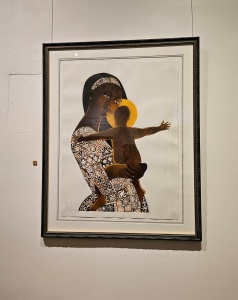
If you’re in moderate to good shape (I am not), the labyrinth was an easy walk from the gallery building. There were two paths: one paved road and one a bit rougher through the wooded area and over tree roots. I chose the second one; I’m still not sure what I was thinking other than the immensity of the surrounding trees and crunching leaves under my feet, stepping over roots that formed a short staircase was what I wanted as I approached the labyrinth. It was magnificent. We also had it all to ourselves while we were there, which was lovely. There were also benches around the perimeter for sitting, although once you started the prayerful labyrinth walk, you’d have to leave to sit on the benches. I took several breaks on the path, but went once through, beginning at the entrance with an Our Father and a Hail Mary. I (of course) took several photos and got some nice family ones as well. It was hot in the sun, but the cool breeze made the day perfect. I was so glad that we took this spontaneous self-retreat.
At the bottom is a prayer I wrote for a labyrinth meditation that will appear in my forthcoming book on labyrinth prayer.
Less than a week later, I was at Siena College in Loudonville, a hamlet outside of New York’s capital of Albany viewing their Heritage Collection of the St. John’s Bible. I’ve seen select volumes up close and they were remarkable. This was an opportunity to hear about their creation and see all seven volumes housed in the Standish library on the college campus.
The advent of the Gutenberg Bible, the first machine done book, led to less and less hand done books and Bibles. There was a Benedictine one started after Gutenberg, but that project was abandoned. This Bible is housed at St. John’s University in Collegeville, Minnesota. The St. John’s Bible is the first hand-written commissioned Bible in five hundred years. Donald Jackson coordinated its creation and was the artistic director. There were six calligraphers, and twenty-two artists involved. Of the 1141 pages, there are only 11 mistakes. It is expected to survive for over a thousand years.
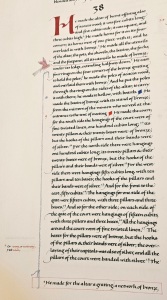
(c)2023
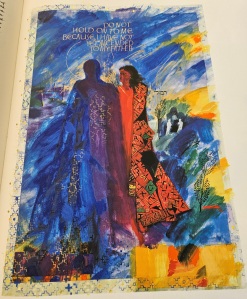
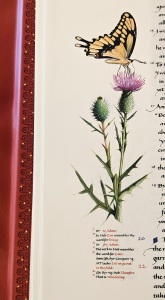
(c)2023
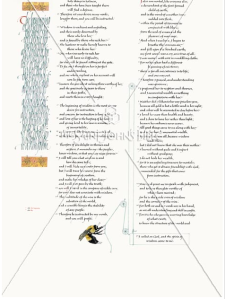
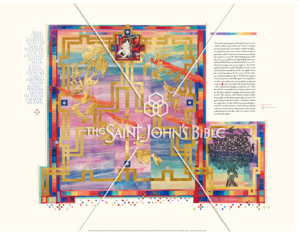
The next day, I attended a World Peace & Prayer Day Interfaith Service, again at the St. Kateri Tekakwitha Shrine. We were fortunate with the weather that we were able to sit outside in the Native American Peace Grove, in a circle around the sign and sundial. It was too dry to have a sacred fire, but there was smoke rising from the smudging of the space, and then we were each offered an opportunity to be smudged – to purify ourselves in the smoke. There were several faith leaders there to speak including a Mohawk Elder, Episcopal Reverend, Rabbi, Catholic priest, a Reverend from the Tendai Buddhist Institute, Franciscan Friar, and Protestant Reformed pastor. Each one brought their unique views of Creation and the universe to all of us in a special way. I am strongly involved in interfaith philosophy and so this was very meaningful to me, and the fact that it was on traditional Haudenosaunee (Mohawk) land and land where St. Kateri roamed made more of an impact on me. In addition to her other patronages, she is the patron of the environment and ecology, a testament to the Indigenous peoples’ view and care of the land.
I will be visiting two of her shrines in August, and that will complete (I believe) my tour of Kateri’s sites. She was one of my final three choices for a patron saint for my confirmation, and she remains close to my heart.
The month will end with a viewing (tonight) of Indiana Jones and the Dial of Destiny. This is sort of ironic since earlier in the month I treated myself to watching Raiders of the Lost Ark on streaming. Maybe I’ll catch up on all of them if the inspiration takes ahold of me.
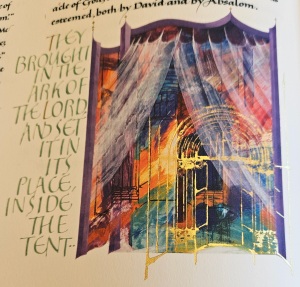
The Ark of the Covenant.
(c)2023
I hope some of these photos and links lead you to some inspiration in the days and weeks ahead.
We are not human beings having a spiritual experience.
– Pierre Teilhard de Chardin
We are spiritual beings having a human experience.
Lead my way
KBW(c)2023
And guide me
Bless my steps
Yearning for an open heart
Receive my silent prayer, my
Intentions
Nurture my soul
Thanks be to You
Homeward now.

